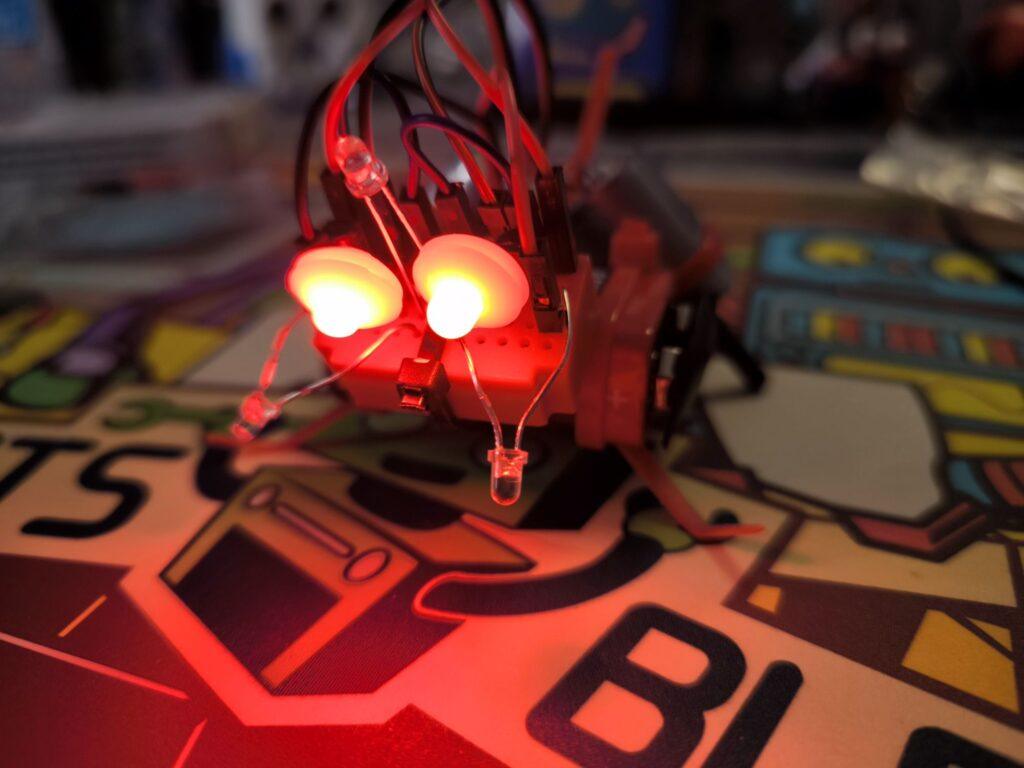
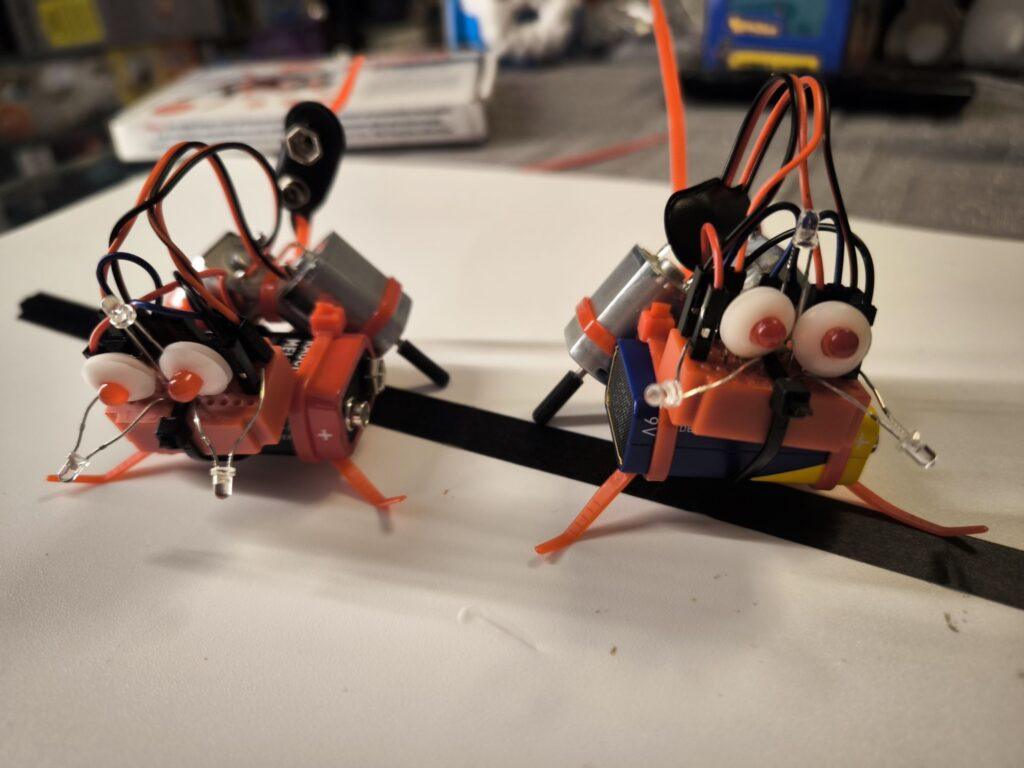
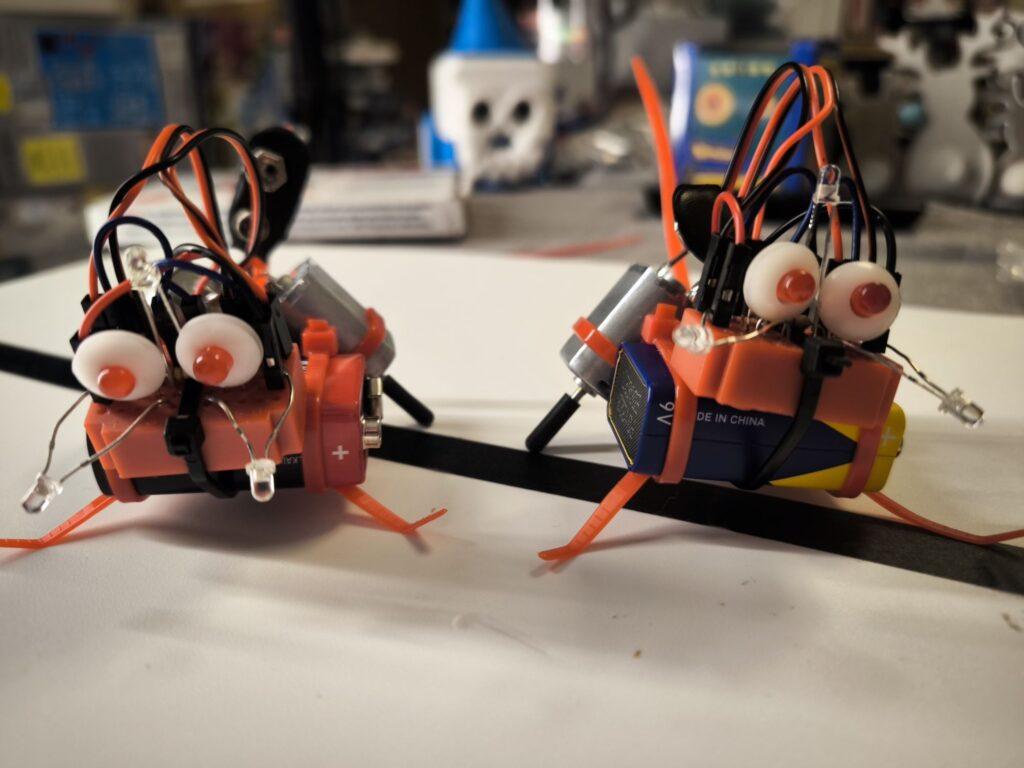
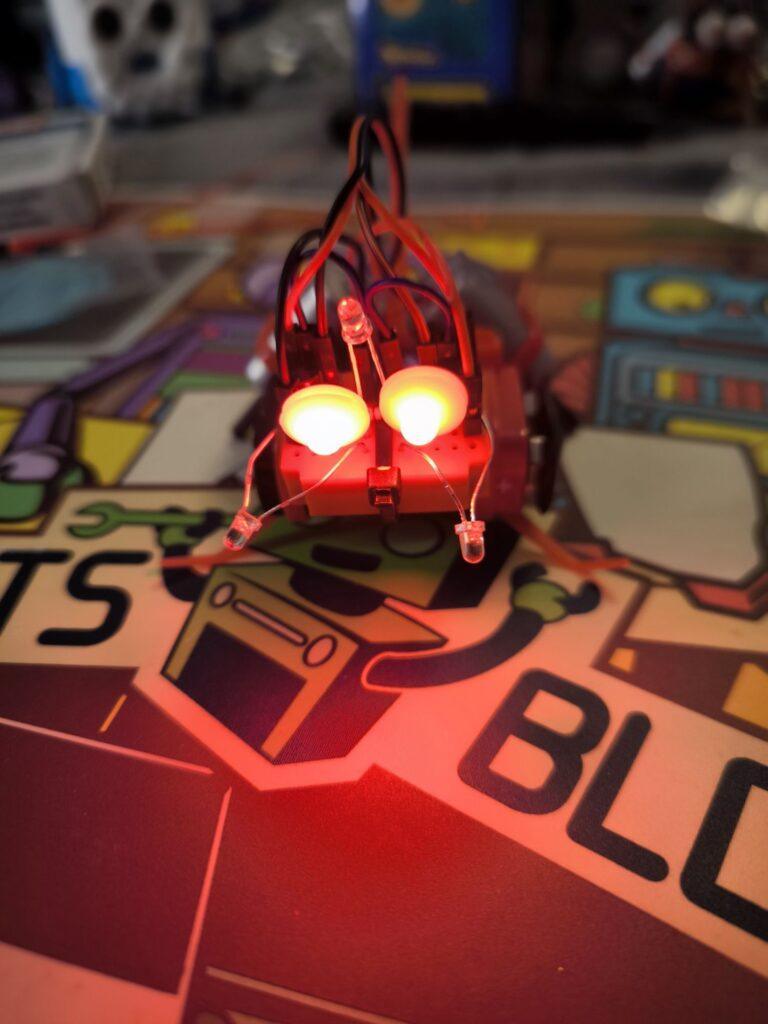
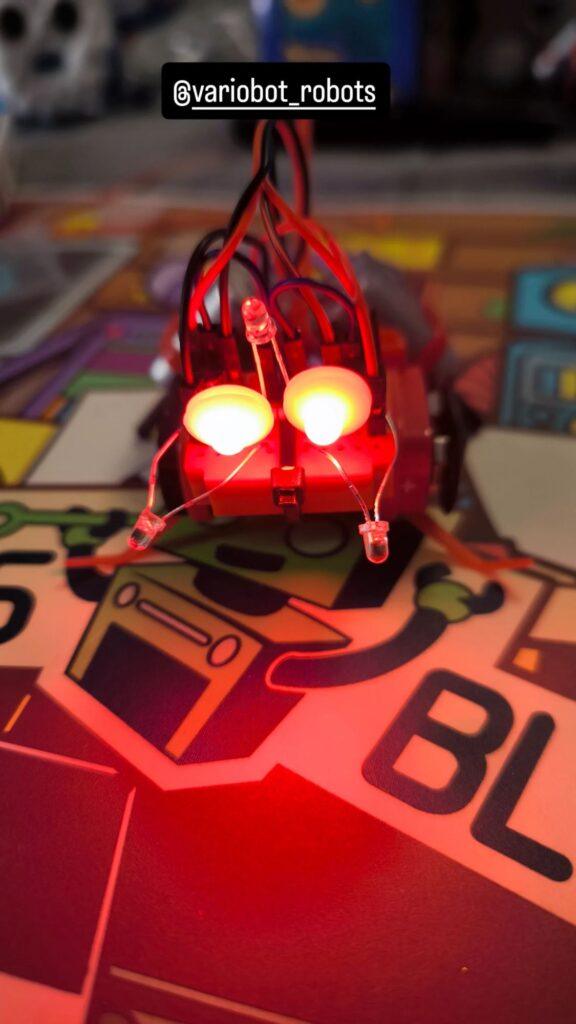






Interaktiver KI-Berater nutzt Anwendungsdatenbank und verkürzt die Suche nach Komponenten für kostengünstige Roboterlösungen
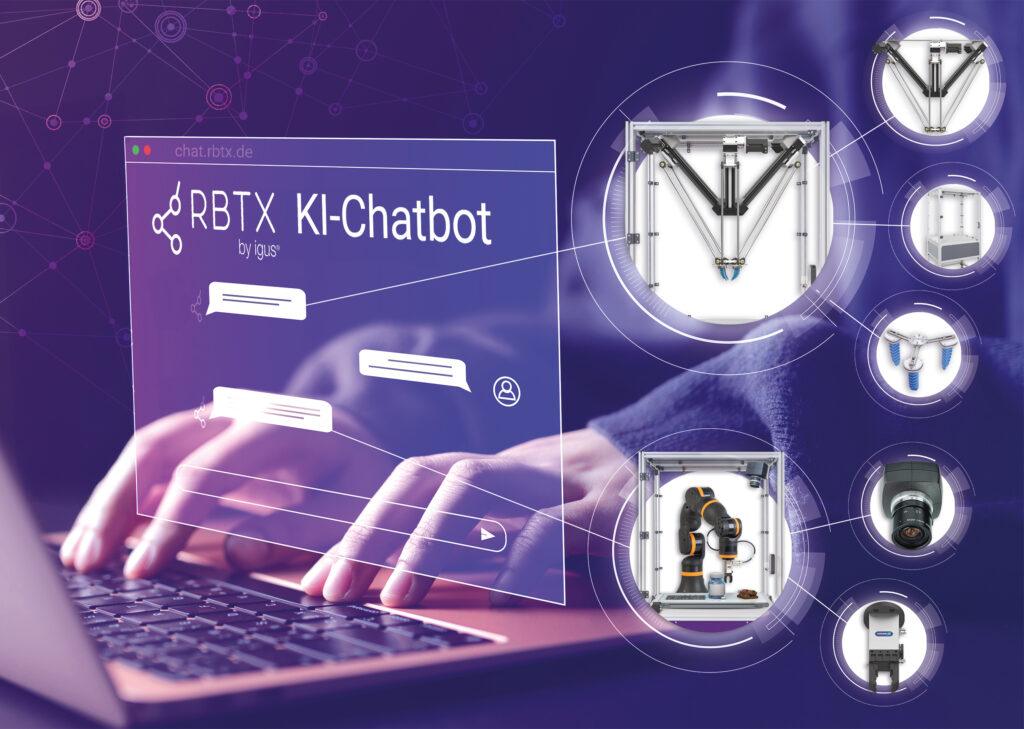
Köln, 11. Dezember 2024 – igus hat die Online-Plattform RBTX.com um einen neuen KI-Chatbot erweitert. Der interaktive Berater soll es Unternehmen mit wenig Vorerfahrung und technologischem Know-how ermöglichen, schnell und sicher Low-Cost-Automationslösungen zusammenzustellen, um ihre Wettbewerbsfähigkeit zu stärken. Erste User zeigen sich von der intuitiven KI-Lösung begeistert.
Viele Unternehmen wissen bereits, dass Automation enorme Potenziale bietet, um den Herausforderungen einer sich schnell verändernden Arbeitswelt zu begegnen. Doch die entscheidende Frage bleibt: Wie setzt man sie um? RBTX liefert die Antwort: Auf dem Online-Marktplatz finden sich über 500 Roboterlösungen, von denen 95 Prozent weniger als 12.000 Euro kosten. Hier können auch Unternehmen ohne Vorkenntnisse in der Robotik kostengünstige Low-Cost-Automation-Lösungen (LCA) nach dem Plug-and-Programme-Prinzip zusammenstellen. „Mit RBTX wollen wir Schritt für Schritt alle Barrieren aus dem Weg räumen, die Unternehmen beim Einstieg in die Automation im Weg liegen“, sagt Alexander Mühlens, Prokurist und Leiter Geschäftsbereich Low-Cost-Automation bei igus. Entscheidend ist hier beispielsweise, für eine garantierte Interoperabilität aller angebotenen Komponenten zu sorgen, die Fehlkäufe nahezu unmöglich macht. „Ein weiterer Schritt auf diesem Weg ist nun die Einführung eines neuen KI-Beraters, der mit Interessierten in Interaktion tritt, um die Suche nach Komponenten in einem immer größer werdenden Sortiment zu verkürzen.“
Der neue KI-Chatbot auf https://chat.rbtx.de unterstützt Nutzer durch eine schriftliche Interaktion dabei, passende LCA-Komponenten zu finden. Dabei greift die Künstliche Intelligenz auf die Erfahrungsdaten von hunderten Projekten zurück, die Unternehmen mithilfe von RBTX bereits erfolgreich automatisiert haben. Entsprechend zielführend sind die Antworten. Ein Beispiel: Eine kleine Werkstatt leidet unter Arbeitskräftemangel und möchte die Beladung ihrer CNC-Maschine mit Rohlingen automatisieren. Der Technikleiter des Betriebs bemüht den neuen KI-Chatbot und stellt ihm die Frage: „Welcher Roboter eignet sich für die Beladung meiner CNC-Maschine?“ Innerhalb weniger Sekunden liefert die KI die Antwort: „Der robolink Roboterarm von igus wäre hier eine geeignete Lösung. Der Arm bewegt sich über fünf Achsen, hat eine Reichweite von 790 Millimetern, eine Geschwindigkeit von sieben Picks pro Minute und kann die Lage der Bauteile mithilfe einer 3D-Kamera wahrnehmen. Der Preis beginnt bei 2.766 Euro.“ Nach dieser Antwort fragt der Nutzer, welcher Greifer passend wäre. Der KI-Berater antwortet: „Ein Parallelgreifer von Zimmer wäre eine geeignete Wahl.“ In einem solchen natürlich anmutenden Dialog stellen sich Nutzer sukzessive ihre individuelle LCA-Lösung zusammen.
Unternehmen, die mit Automation experimentieren, geben sich vom neuen KI-Chatbot begeistert. „Viele Kunden haben uns bereits das Feedback gegeben, dass sie mit dem KI-Roboterberater in einen Dialog getreten sind. Er hat ihnen ein besseres Gespür für die Möglichkeiten der Low-Cost-Automation gegeben und die Suche nach den passenden Komponenten wesentlich beschleunigt“, freut sich Mühlens. „Wir planen deshalb, den KI-Berater in Zukunft um zusätzliche Funktionen zu erweitern.“ So soll es beispielsweise möglich sein, dass der Berater Bilder und Videomaterial von Referenzen in seine Antworten einbettet und LCA-Komplettlösungen mit einem Richtpreis entwickeln kann.
Stellen Sie sich vor, Sie arbeiten in einer Werkstatt und hantieren mit winzigen Teilen, die in einem Präzisionsgerät eingebaut werden sollen. Früher war das eine typische Aufgabe für den Menschen, oft mit Lupen, Mikroskopen oder anderen Vergrößerungswerkzeugen bewaffnet, um ja jedes Detail genau zu sehen. Aber seit den letzten Jahren übernehmen zunehmend Roboter diese Tätigkeiten. Roboter und ihre KI-gesteuerten Kollegen wurden so entwickelt, dass sie Arbeiten mit einer Präzision und einem Auge fürs Detail ausführen können, das vor nicht allzu langer Zeit nur dem Menschen vorbehalten war.
Ein gutes Beispiel ist die Medizin. Denken Sie an komplizierte Operationen – bei einer Augenoperation oder bei minimalinvasiven Eingriffen, etwa an der Wirbelsäule, kann selbst das kleinste Zittern oder eine falsche Bewegung fatale Folgen haben. Früher haben Chirurgen mit Lupen mit Licht (als Brille) und extrem ruhigen Händen gearbeitet. Heute unterstützen Roboter diese Arbeit. Zum Beispiel gibt es Operationssysteme, bei denen der Chirurg den Roboter führt, aber die Präzisionsarbeit – millimetergenaue Schnitte und Bewegungen – übernimmt die Maschine.
Diese Roboter sind mit hochentwickelten optischen Sensoren und Kameras ausgestattet, die alles vergrößert und detailliert darstellen, sodass der Chirurg oder die Chirurgin genau sieht, was vor sich geht. Man könnte sagen, diese Roboter haben eingebaute „Lupen“ – ein visuelles System, das wie eine übermenschliche Sehhilfe funktioniert. Und durch diese Kombination aus menschlicher Kontrolle und maschineller Präzision sind Operationen möglich, die für den Menschen alleine kaum machbar wären.

Ein weiteres Beispiel ist die industrielle Qualitätskontrolle. Früher hatten Menschen hier oft den Job, Produkte am Fließband genau zu inspizieren. Ob es nun um kleine Kratzer auf einem Glasbildschirm geht oder um winzige Risse in Bauteilen – jemand musste genau hinschauen und entscheiden, ob das Teil den Qualitätsstandards entsprach. Hier kamen häufig Vergrößerungsgläser oder spezielle Lupen zum Einsatz. Doch solche Inspektionsarbeiten werden mittlerweile oft von Robotern erledigt. Diese Roboter sind mit High-Tech-Kameras ausgestattet, die mikroskopisch kleine Details aufnehmen können. Mithilfe von KI-Algorithmen können sie blitzschnell analysieren, ob ein Produkt den Anforderungen entspricht oder nicht.
Diese Genauigkeit ist besonders in der Elektronikproduktion gefragt. Jeder kennt das Gefühl, wenn das Handy oder der Laptop perfekt funktioniert – und auch den Frust, wenn das mal nicht der Fall ist. Winzige Fehler in diesen Geräten können aber leicht übersehen werden, wenn man rein mit menschlichem Auge arbeitet. Roboter hingegen, ausgestattet mit extrem hochauflösenden Kameras, erkennen auch kleinste Fehler in Schaltkreisen oder Lötstellen. Diese „Maschinenlupe“ sieht alles, und das bis ins mikroskopisch kleine Detail. Die Folge: Weniger Fehler, höhere Qualität, zufriedenere Kunden.
Roboter mit präziser Technik kommen auch im Bereich der Schmuckherstellung zum Einsatz. Das Fassen winziger Edelsteine oder das Gravieren feiner Muster – früher reine Handarbeit mit Lupenbrillen, ruhigen Händen und viel Fingerspitzengefühl – wird heute immer öfter von Robotern übernommen. Dabei können diese Maschinen Bewegungen ausführen, die so gleichmäßig und wiederholbar sind, dass jedes Stück perfekt verarbeitet wird. Natürlich ersetzt die Maschine nicht die künstlerische Kreativität der Goldschmiede, aber sie hilft bei den präzisen, aufwändigen Arbeitsschritten, die viel Geschick verlangen.
Interessant ist, dass Roboter nicht nur mehr Präzision bringen, sondern auch den Menschen entlasten. Arbeiten, die hohe Konzentration und ein scharfes Auge erfordern, sind oft anstrengend und erfordern Pausen, um die Qualität zu halten. Roboter hingegen können stundenlang ohne Unterbrechung arbeiten und liefern immer dasselbe hohe Maß an Genauigkeit. So können sie Menschen von besonders anstrengenden und monotonen Aufgaben befreien, während die Menschen sich kreativeren und strategischeren Tätigkeiten widmen.

Zusammengefasst: Roboter und KI übernehmen immer mehr Arbeiten, die ein präzises Auge und Genauigkeit erfordern – Tätigkeiten, für die früher Lupen und menschliches Fingerspitzengefühl nötig waren. Ob in der Medizin, Industrie oder Schmuckherstellung: Maschinen und ihre „eingebauten Lupen“ leisten Erstaunliches und entlasten uns gleichzeitig. So kann man sagen, dass Roboter den Menschen nicht ersetzen, sondern ihn in seiner Genauigkeit und Effizienz auf eine neue Ebene bringen.
bezahlter Gastbeitrag von AWISEERobotics has quickly become pivotal across industries like manufacturing, health care and agriculture, transforming how work gets done. It boosts productivity and efficiency by taking on repetitive, precise and physically demanding tasks. This tech revolution is now entering construction, a sector known for its grueling physical demands and labor-intensive processes.

Autonomous robots are stepping up to handle critical jobs — from site inspections to heavy lifting — helping jobsites become safer, more efficient and more precise. This shift is fundamental to an industry where advanced robotics and human expertise work together, reimagining what’s possible on the modern jobsite.
Autonomous robots are making serious headway in the construction industry. Still, only about 55% of the sector globally is currently harnessing their potential. For companies that have embraced this technology, these devices have already tackled some of the most crucial and challenging tasks on jobsites.
For example, drones can handle aerial inspections, create detailed site maps and monitor progress with remarkable accuracy and speed. Meanwhile, specialized robots enhance bricklaying into a faster, more precise process. Moreover, large-scale 3D printing machines can construct entire structures, revolutionizing project planning and execution.
As these technologies improve, robots increasingly take on the larger and more complex tasks that once required intense physical labor. From foundational work to finishing touches, construction robots‘ capabilities are expanding rapidly. They manage these high-stakes jobs to reshape the industry and set new speed, safety and efficiency standards on modern jobsites.
This movement toward automation opens doors to a construction landscape where advanced technology and skilled labor work in tandem. It paves the way for more ambitious projects and a more streamlined building process.
Robots come in many shapes and sizes, each designed to handle specific tasks that enhance precision. From ground-level operations to overhead site monitoring, these machines help employees plan, manage and execute projects. Here’s a look at some of the types of autonomous robots making a difference on jobsites today:
Each type of robot plays a specialized role, showing how automation can address the unique demands of construction and reshape what’s possible on jobsites.

Robots benefit construction projects, especially regarding efficiency, precision and safety. Unlike human crews, these devices can work continuously to help reduce project timelines and keep everything on schedule. With their high level of accuracy, they minimize errors and waste, which also reduces costly rework and makes each project more resource-efficient.
Perhaps most importantly, automation makes construction sites safer. For example, taking over repetitive and physically taxing tasks helps prevent injuries related to repetitive stress and fatigue. This creates a safer work environment where human workers can focus on tasks requiring skill and oversight.
The rise of robotics in construction transforms job roles, shifting the focus from hands-on labor to more specialized oversight and technical maintenance. As robots handle demanding tasks like heavy lifting, bricklaying and site inspections, the U.S. construction industry is expected to need around 500,000 new workers in 2024 to meet project demands.
Robotics could help address this gap while introducing a tech-driven shift on jobsites. Although concerns about job displacement are natural, experts see robots and humans as a powerful team, each enhancing the other’s strengths. Machines can tackle repetitive, high-risk jobs to make sites safer. Meanwhile, human workers focus on decision-making, creativity and complex problem-solving. This collaboration helps build a smarter, safer workforce.
Over the next decade, construction robotics can make major leaps forward. In fact, experts predict the global market for these technologies could exceed $242 million by 2030. Emerging tools like AI integration and enhanced sensors are expected to bring new levels of functionality to robots. They allow them to analyze data, adapt to changing environments and make intelligent decisions to boost precision and productivity on jobsites.
These advancements may lead to fully autonomous construction sites, where robots manage nearly every aspect of the build, from digging foundations to applying finishing touches. Such a shift would slash project timelines and improve safety by reducing human exposure to high-risk tasks. It also sets the stage for an industry that combines cutting-edge automation with human oversight to deliver faster, safer and more efficient projects than ever before.
While robots bring tremendous benefits to construction sites, they also open up new roles for workers in areas like oversight, programming and maintenance. However, these advancements come with challenges, which require workers to adapt to a tech-driven environment and develop specialized skills to thrive alongside automation.
Guest article by Ellie Gabel. Ellie is a writer living in Raleigh, NC. She's passionate about keeping up with the latest innovations in tech and science. She also works as an associate editor for Revolutionized.After a string of successful Kickstarter campaigns, Geek Club and CircuitMess have teamed up once again to launch an exciting new project: an AI-powered desk robot designed especially for Rick and Morty fans.
Zagreb, Croatia – November 2024 – Geek Club and CircuitMess are thrilled to announce the official launch of their Kickstarter campaign for the Butter Bot, a revolutionary AI-powered robot inspired by the one made famous in the popular Adult Swim series, Rick and Morty, and first seen in season 1 episode 9. This innovative product is officially licensed by Warner Bros. Discovery Global Consumer Products (WBDGCP), bringing the iconic Butter Bot to life in a way fans have never seen before.
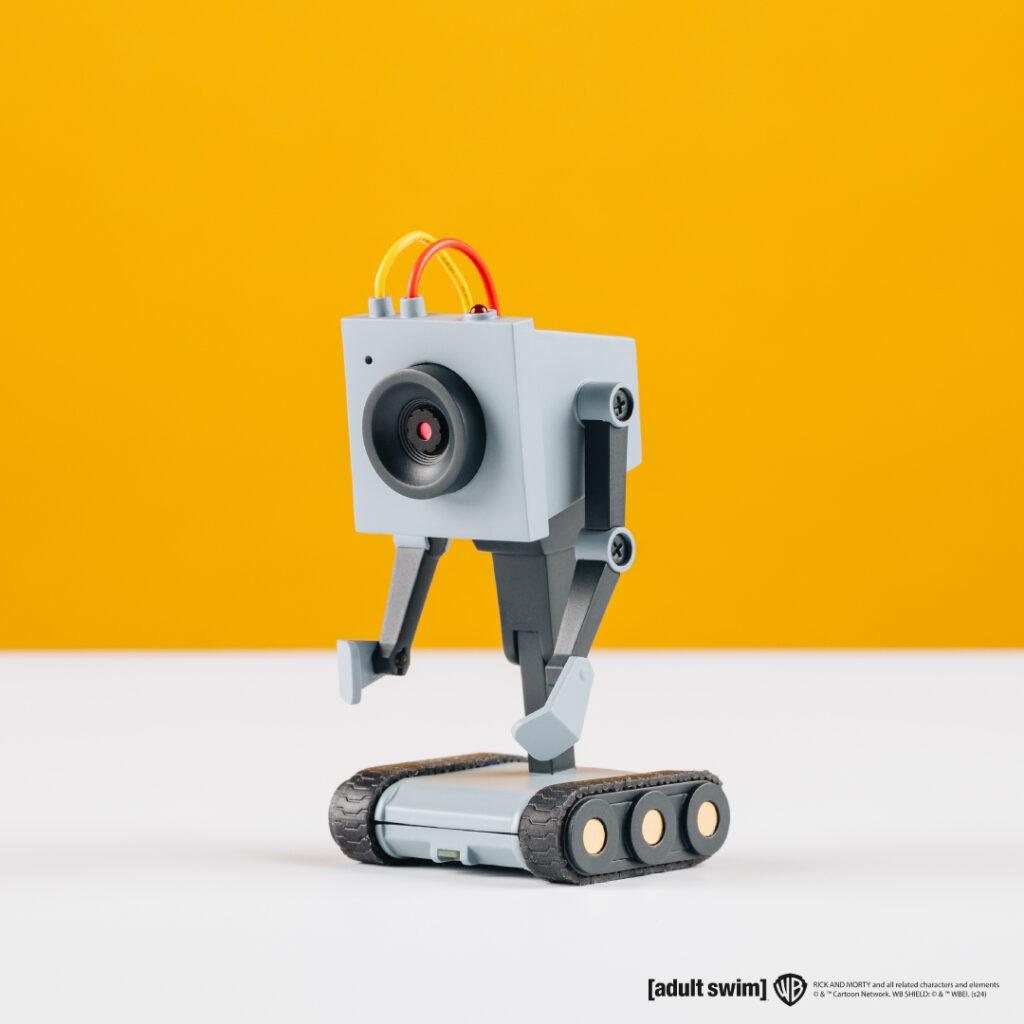
From Screen to Reality: A Partnership That Is Bringing Butter Bot to Life
A shared love of Rick and Morty show between CircuitMess and Geek Club teams led to this project. Both companies saw an opportunity to bring a beloved character to life in a way that was both true to the show and technologically innovative. They chose the Butter Bot because of its iconic status and potential for interactive, educational, and entertaining applications. By turning a simple butter-passing robot into a multifunctional AI companion, they aimed to create a product that would resonate with fans and tech enthusiasts alike, merging humor and functionality seamlessly.
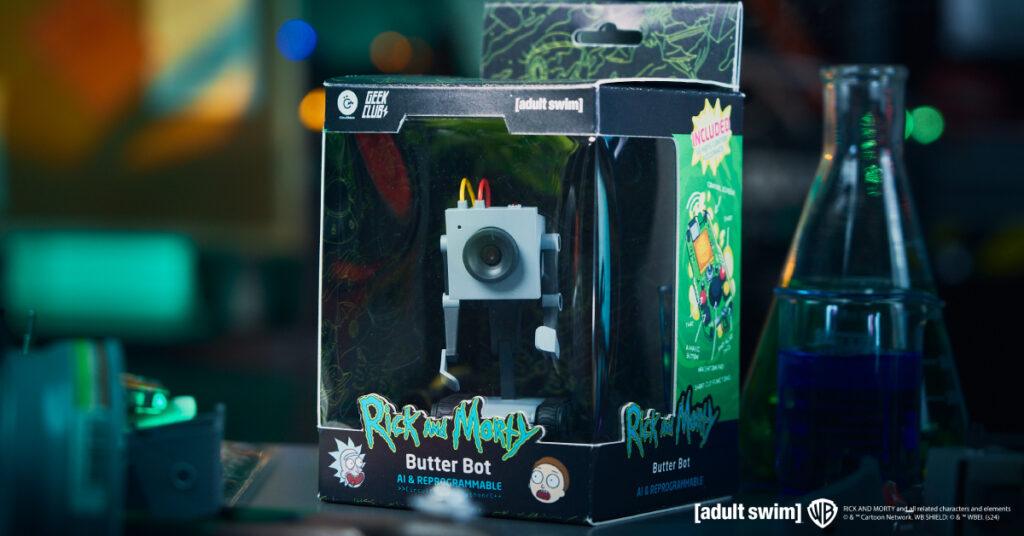
From Mars to Multiverse: The Next Chapter for CircuitMess and Geek Club
The collaboration was a logical union of the two companies after the massive success of the previous Kickstarter – NASA Perseverance AI-powered Mars Rover. Both companies create educational STEM DIY kits for kids and adults in order to make learning STEM skills easy and fun. While CircuitMess is focused primarily on toys, Geek Club’s products are always robot and space-themed.
„Partnering with WBDGCP on this project has been an exciting next step in our collaboration with Circtuit Mess, says Nico, co-founder of Geek Club, sharing his enthusiasm: “The Butter Bot is a testament to what happens when creativity, technology, and fandom collide. We’re excited to see the support and engagement from the community as we launch our Kickstarter campaign.“
Geek Club is an American company that specializes in designing and producing DIY robotics kits that educate their users on soldering and electronics. They focus primarily on space exploration and robotics, all to make learning engineering skills easy and fun for their young and adult audience.
Beyond Butter: Introducing the AI-Powered Butter Bot
The Butter Bot is not just a simple robot with the sole purpose of passing the butter, as originally in the show. It comes with a unique remote controller that allows for precise maneuvering of its movement while also providing a live feed from the bot’s camera. The interactive robot has advanced AI capabilities, making it a versatile companion in any setting.
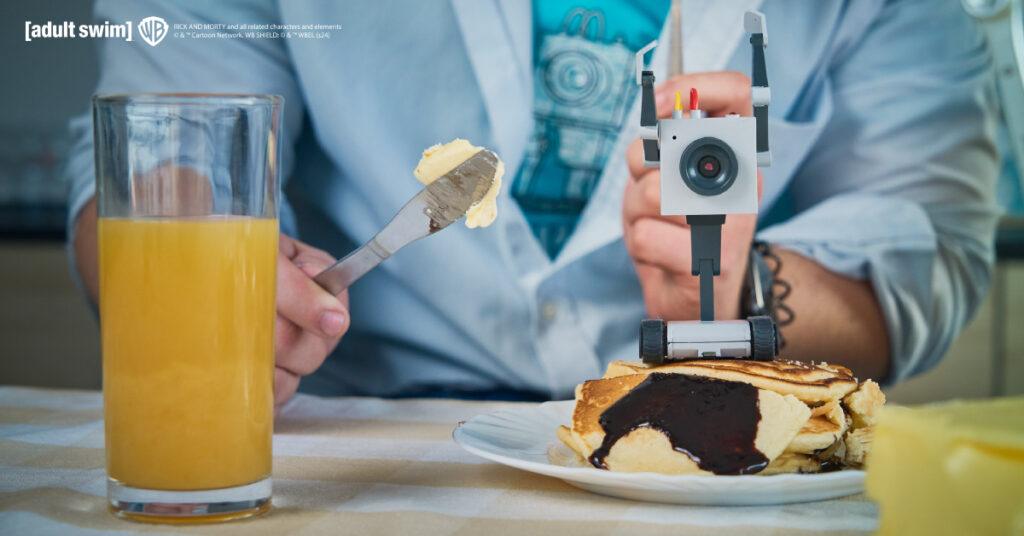
„Bringing the Butter Bot from Rick and Morty into the real world has been an incredible journey,” says Albert Gajšak, CEO of CircuitMess, expressing his excitement about the launch: “We’ve poured our hearts into creating a product that not only honors the original character but also adds a whole new level of interactivity and functionality. We can’t wait to see how fans will use and enjoy it.“
To this day, CircuitMess has developed numerous educational products that encourage kids and adults to create rather than just consume. They successfully delivered 7 Kickstarter campaigns and made thousands of geeks worldwide extremely happy. CircuitMess‘ kits are a unique blend of resources for learning about hardware and software in a fun and exciting way.
The Butter Bot Kickstarter campaign offers backers exclusive early-bird pricing and special rewards.
For more information and to back the project, visit the Butter Bot Kickstarter page here (https://www.kickstarter.com/projects/albertgajsak/rick-and-mortytm-butter-bot-an-ai-powered-desk-robot), or check out the Geek Club and CircuitMess websites to see all their other kits.
About Geek Club
Geek Club is a crew of designers and engineers led by co-founders Nicolas Deladerrière and Nikita Potrashilin. Their mission is to build electronic construction kits for curious minds in over 70 countries worldwide. They are most often inspired by NASA and other Space Agencies of the world and hope to push their fans’ minds further, strengthen their skills, and advance their knowledge of electronics and Space.
Their vision is to create a world of inventors for the next generation of technology with their space-themed STEM kits. Find out more at www.geekclub.com.
Nicolas Deladerrière, co-founder of Geek Club
Mail: [email protected]
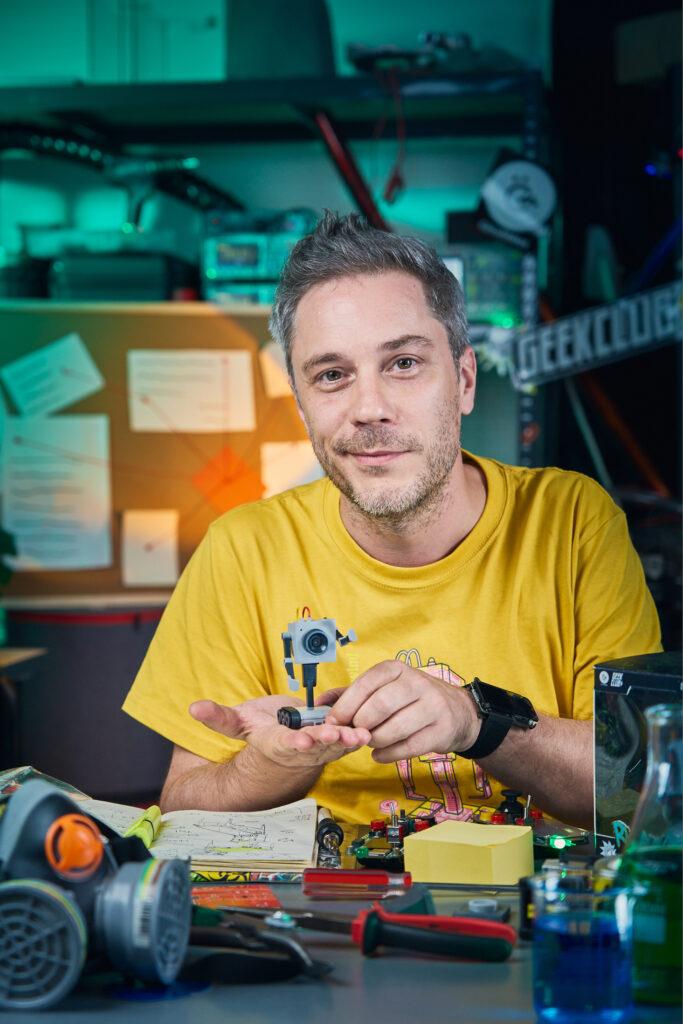
About CircuitMess
CircuitMess is a technology startup founded in 2017 by Albert Gajšak and Tomislav Car after a successful Kickstarter campaign for MAKERbuino.
CircuitMess employs young, ambitious people and has recently moved to a new office in Croatia’s capital, Zagreb, searching for talented individuals who will help them create unique electronic products and bring technology to the crowd in a fun and exciting way. Find out more at www.circuitmess.com.
Albert Gajšak, co-founder and CEO of CircuitMess
Mail: [email protected]
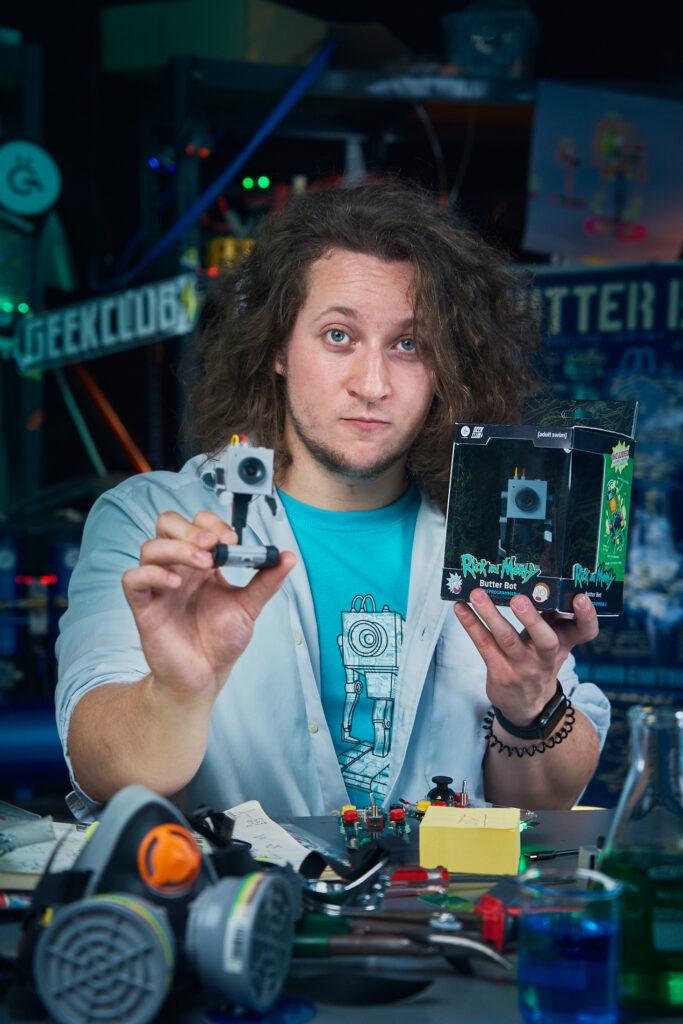
About Rick and Morty
Rick and Morty is the Emmy® award-winning half-hour animated hit comedy series on Adult Swim that follows a sociopathic genius scientist who drags his inherently timid grandson on insanely dangerous adventures across the universe. Rick Sanchez is living with his daughter Beth’s family and constantly bringing her, his son-in-law Jerry, granddaughter Summer, and grandson Morty into intergalactic escapades.
Rick and Morty stars Ian Cardoni, Harry Belden, Sarah Chalke, Chris Parnell, and Spencer Grammer.
About Warner Bros. Discovery Global Consumer Products
Warner Bros. Discovery Global Consumer Products (WBDGCP), part of Warner Bros. Discovery’s Revenue & Strategy division, extends the company’s powerful portfolio of entertainment brands and franchises into the lives of fans around the world. WBDGCP partners with best-in-class licensees globally on award-winning toy, fashion, home décor and publishing programs inspired by the biggest franchises from Warner Bros.’ film, television, animation, and games studios, HBO, Discovery, DC, Cartoon Network, HGTV, Eurosport, Adult Swim, and more. With innovative global licensing and merchandising programs, retail initiatives, and promotional partnerships, WBDGCP is one of the leading licensing and retail merchandising organizations in the world.
Nach einer Reihe erfolgreicher Kickstarter-Kampagnen haben sich Geek Club und CircuitMess erneut zusammengeschlossen, um ein aufregendes neues Projekt zu starten: ein AI-gesteuerter Tischroboter, der speziell für Fans von Rick und Morty entwickelt wurde.
Zagreb, Kroatien – November 2024 – Geek Club und CircuitMess freuen sich, den offiziellen Start ihrer Kickstarter-Kampagne für den Butter Bot bekannt zu geben, einen revolutionären Roboter, der von künstlicher Intelligenz gesteuert wird. Er ist inspiriert vom berühmten Roboter aus der beliebten Adult Swim-Serie Rick und Morty, der erstmals in Staffel 1, Folge 9 zu sehen war. Dieses innovative Produkt ist offiziell von Warner Bros. Discovery Global Consumer Products (WBDGCP) lizenziert, wodurch der kultige Butter Bot auf eine Weise zum Leben erweckt wird, wie es Fans noch nie zuvor gesehen haben.
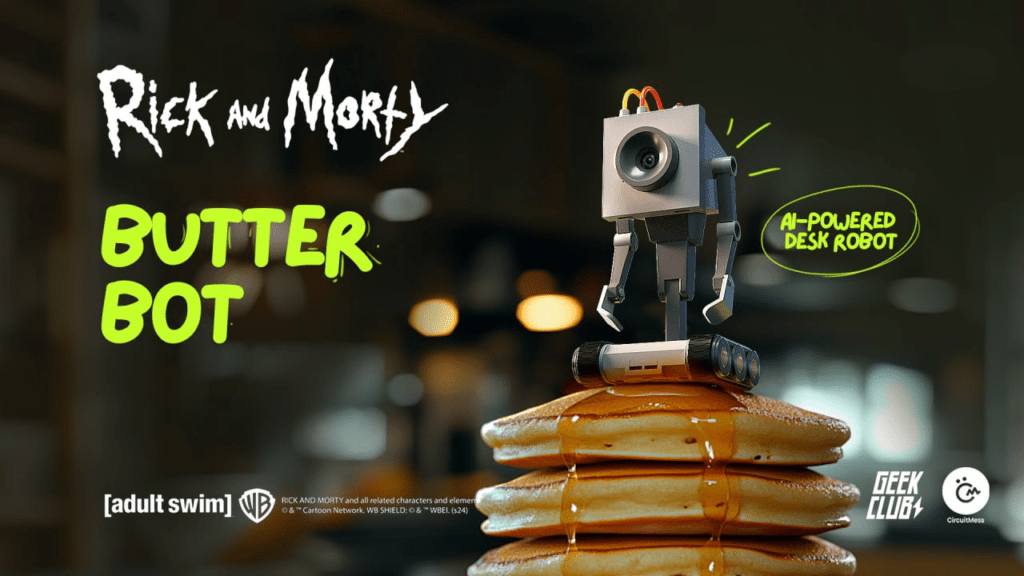
Vom Bildschirm in die Realität: Eine Partnerschaft, die den Butter Bot zum Leben erweckt
Die gemeinsame Liebe zur Serie Rick und Morty unter den Teams von CircuitMess und Geek Club führte zu diesem Projekt. Beide Unternehmen erkannten die Gelegenheit, einen geliebten Charakter auf eine Weise zum Leben zu erwecken, die sowohl der Serie treu bleibt als auch technologisch innovativ ist. Sie wählten den Butter Bot aufgrund seines ikonischen Status und seines Potenzials für interaktive, lehrreiche und unterhaltsame Anwendungen. Durch die Umwandlung eines einfachen Butter-überreichenden Roboters in einen multifunktionalen AI-Begleiter wollten sie ein Produkt schaffen, das sowohl bei Fans als auch bei Technikbegeisterten Anklang findet und nahtlos Humor und Funktionalität miteinander verbindet.

Von Mars bis Multiversum: Das nächste Kapitel für CircuitMess und Geek Club
Diese Zusammenarbeit war ein logischer Schritt für beide Unternehmen nach dem großen Erfolg des vorherigen Kickstarter-Projekts – dem NASA Perseverance AI-powered Mars Rover. Beide Unternehmen erstellen lehrreiche STEM-DIY-Kits für Kinder und Erwachsene, um das Erlernen von STEM-Fähigkeiten einfacher und unterhaltsamer zu gestalten. Während sich CircuitMess hauptsächlich auf Spielzeuge konzentriert, sind die Produkte von Geek Club immer robotik- und raumfahrtthemenbezogen.
„Die Zusammenarbeit mit WBDGCP bei diesem Projekt war ein spannender nächster Schritt in unserer Partnerschaft mit CircuitMess“, sagt Nico, Mitbegründer von Geek Club, und teilt seine Begeisterung: „Der Butter Bot ist ein Beweis dafür, was passiert, wenn Kreativität, Technologie und Fan-Leidenschaft aufeinandertreffen. Wir freuen uns darauf, die Unterstützung und das Engagement der Community zu erleben, während wir unsere Kickstarter-Kampagne starten.“
Geek Club ist ein amerikanisches Unternehmen, das sich auf das Design und die Herstellung von DIY-Roboterbausätzen spezialisiert hat, die ihre Nutzer in Löten und Elektronik schulen. Ihr Fokus liegt hauptsächlich auf Raumfahrt und Robotik, mit dem Ziel, das Erlernen von Ingenieursfähigkeiten für ihr junges und erwachsenes Publikum einfach und unterhaltsam zu machen.
Mehr als Butter: Vorstellung des AI-gesteuerten Butter Bot
Der Butter Bot ist nicht nur ein einfacher Roboter, dessen einzige Aufgabe es ist, wie in der Serie Butter zu überreichen. Er wird mit einer einzigartigen Fernbedienung geliefert, die präzises Manövrieren ermöglicht und gleichzeitig eine Live-Übertragung von der Kamera des Roboters bietet. Dieser interaktive Roboter verfügt über fortschrittliche AI-Funktionen und ist damit ein vielseitiger Begleiter in jeder Umgebung.
„Den Butter Bot aus Rick und Morty in die reale Welt zu bringen, war eine unglaubliche Reise“, sagt Albert Gajšak, CEO von CircuitMess, und drückt seine Begeisterung für den Launch aus: „Wir haben viel Herzblut in die Entwicklung eines Produkts gesteckt, das nicht nur dem Originalcharakter Ehre macht, sondern auch eine völlig neue Ebene der Interaktivität und Funktionalität hinzufügt. Wir können es kaum erwarten zu sehen, wie die Fans ihn nutzen und genießen werden.“
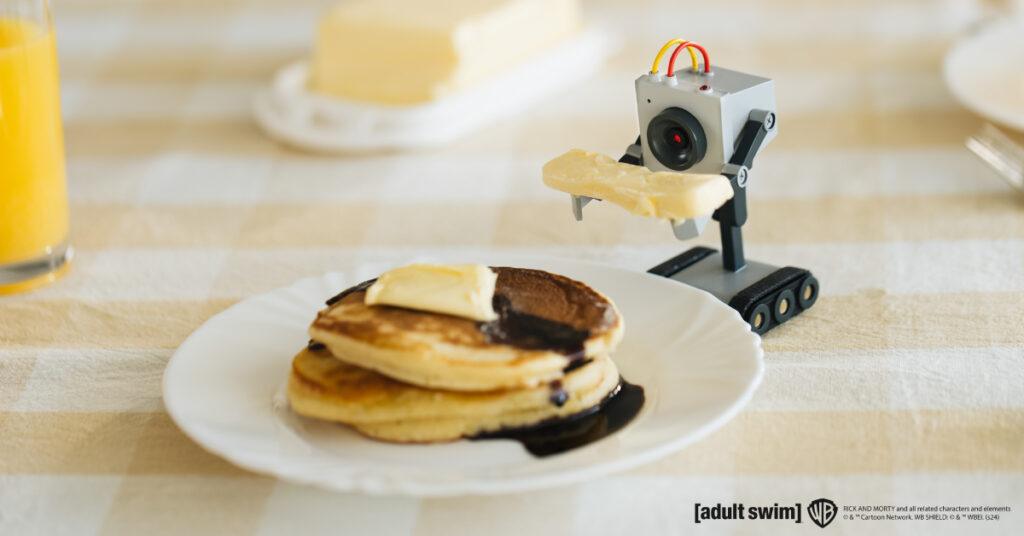
Bis heute hat CircuitMess zahlreiche lehrreiche Produkte entwickelt, die Kinder und Erwachsene dazu ermutigen, zu erschaffen, anstatt nur zu konsumieren. Sie haben erfolgreich 7 Kickstarter-Kampagnen abgeschlossen und tausende Geeks weltweit glücklich gemacht. Die Kits von CircuitMess sind eine einzigartige Kombination von Ressourcen, um auf unterhaltsame und aufregende Weise etwas über Hardware und Software zu lernen.
Die Kickstarter-Kampagne für den Butter Bot bietet Unterstützern exklusive Frühbucherpreise und spezielle Belohnungen.
Für weitere Informationen und zur Unterstützung des Projekts besuchen Sie die Kickstarter-Seite von Butter Bot hier (https://www.kickstarter.com/projects/albertgajsak/rick-and-mortytm-butter-bot-an-ai-powered-desk-robot) oder schauen Sie sich die Websites von Geek Club und CircuitMess an, um alle anderen Kits zu sehen.
Über Geek Club
Geek Club ist ein Team von Designern und Ingenieuren, das von den Mitbegründern Nicolas Deladerrière und Nikita Potrashilin geleitet wird. Ihre Mission ist es, elektronische Konstruktionskits für neugierige Köpfe in über 70 Ländern weltweit zu entwickeln. Ihre Inspiration kommt meist von der NASA und anderen Weltraumagenturen der Welt, und sie hoffen, den Geist ihrer Fans weiter zu fördern, ihre Fähigkeiten zu stärken und ihr Wissen über Elektronik und Weltraum zu erweitern.
Ihre Vision ist es, mit ihren weltraumthematischen STEM-Kits eine Welt von Erfindern für die nächste Technologiegeneration zu schaffen. Mehr erfahren Sie unter www.geekclub.com.

Nicolas Deladerrière, Mitbegründer von Geek Club
E-Mail: [email protected]
Über CircuitMess
CircuitMess ist ein Technologie-Startup, das 2017 von Albert Gajšak und Tomislav Car nach einer erfolgreichen Kickstarter-Kampagne für MAKERbuino gegründet wurde.
CircuitMess beschäftigt junge, ehrgeizige Menschen und ist kürzlich in ein neues Büro in der kroatischen Hauptstadt Zagreb umgezogen. Dort suchen sie nach talentierten Einzelpersonen, die ihnen helfen, einzigartige elektronische Produkte zu entwickeln und Technologie auf unterhaltsame und aufregende Weise für die breite Masse zugänglich zu machen. Mehr erfahren Sie unter www.circuitmess.com.

Albert Gajšak, Mitbegründer und CEO von CircuitMess
E-Mail: [email protected]
Über Rick and Morty
Rick und Morty ist eine Emmy®-preisgekrönte halbstündige animierte Hitkomödie des Senders Adult Swim, die einem soziopathischen genialen Wissenschaftler folgt, der seinen von Natur aus ängstlichen Enkel auf gefährliche Abenteuer im ganzen Universum mitnimmt. Rick Sanchez lebt bei der Familie seiner Tochter Beth und bringt ständig ihren Ehemann Jerry, ihre Enkelin Summer und ihren Enkel Morty in intergalaktische Eskapaden.
In den Hauptrollen spielen Ian Cardoni, Harry Belden, Sarah Chalke, Chris Parnell und Spencer Grammer.
Über Warner Bros. Discovery Global Consumer Products
Warner Bros. Discovery Global Consumer Products (WBDGCP), Teil der Revenue & Strategy-Abteilung von Warner Bros. Discovery, erweitert das mächtige Portfolio der Unterhaltungsmarken und -franchises des Unternehmens in das Leben der Fans auf der ganzen Welt. WBDGCP arbeitet weltweit mit erstklassigen Lizenznehmern an preisgekrönten Programmen für Spielzeug, Mode, Wohnkultur und Verlagswesen, die von den größten Franchises der Warner Bros.-Film-, Fernseh-, Animations- und Spiele-Studios, HBO, Discovery, DC, Cartoon Network, HGTV, Eurosport, Adult Swim und mehr inspiriert sind.
Mit innovativen globalen Lizenz- und Merchandising-Programmen, Einzelhandelsinitiativen und Werbepartnerschaften ist WBDGCP eine der führenden Organisationen für Lizenzierung und Einzelhandelsmerchandising weltweit.
Einfach installiert und schnell amortisiert ermöglicht der mobile Roboter den kostengünstigen Einstieg in die Automatisierung von Logistikprozessen

Stuttgart/Köln, 8. Oktober 2024 – Dass die Automatisierung von Intralogistikprozessen weder teuer noch kompliziert sein muss, beweist igus mit dem neuen ReBeL Move, den der Kölner motion plastics Spezialist auf der Motek 2024 präsentiert. Der mobile Roboter bewegt sich autonom durch Fabrikhallen und transportiert Produkte von A nach B – und kann dafür auch mit dem ReBeL Cobot aus Hochleistungskunststoff kombiniert werden. Es lässt sich schon mit einfachsten IT-Kenntnissen innerhalb einer Stunde in Betrieb nehmen und ist inklusive ReBeL Cobot für 34.808 Euro erhältlich.
Fahrerlose Transportsysteme (FTS) vereinfachen den Alltag in Industriebetrieben: Mitarbeiter an Maschinen müssen beispielsweise nicht länger Werkzeuge und Materialien zu Fuß aus dem Lager holen, sondern lassen sich von autonomen Fahrzeugen unterstützen. Dass eine solche Automatisierung in Zeiten von Kostendruck und Personalmangel die Produktivität steigert und Kosten senkt, erkennen auch immer mehr kleine und mittelständische Betriebe mit niedrigem Automatisierungsgrad. „Dennoch gibt es oft Berührungsängste, weil die Erfahrung fehlt und stattdessen die Angst vor Fehlinvestitionen überwiegt“, sagt Alexander Mühlens, Prokurist und Leiter Geschäftsbereich Low-Cost-Automation bei igus. „Um diesen Betrieben einen barrierefreien und risikoarmen Einstieg in die Automatisierung von Intralogistikprozessen zu ermöglichen, haben wir ein kostengünstiges und intuitiv bedienbares FTS mit einem integrierten Cobot zum Greifen von Gegenständen entwickelt: den ReBeL Move.“
Investition amortisiert sich unter 12 Monaten
Das autonome Transportfahrzeug kann Kleinladungsträger (KLT) mit den Maßen 60×40 Zentimeter und 30×40 Zentimeter und einer Zuladung von bis zu 35 Kilogramm transportieren. Es fährt mit einer Geschwindigkeit von bis zu 1,5 m/s, hat eine Batterielaufzeit von über acht Stunden und eine Ladezeit von unter zwei Stunden. An Bord ist optional der ReBeL, ein Cobot, den igus fast vollständig aus robustem und kostengünstigem Hochleistungskunststoff fertigt. Der Gelenkarmroboter ist mit einem Einzelpreis von nur 4.970 Euro für die vollausgestattete Variante fünfmal günstiger als vergleichbare Modelle aus Metall. Er hat ein Eigengewicht von 8,2 Kilogramm, eine Traglast von 2 Kilogramm und eine Reichweite von 664 Millimetern. „Mit einem Preis von nur 34.808 Euro kostet der ReBeL Move nur einen Bruchteil herkömmlicher FTS, sodass sich die Investition innerhalb von 12 Monaten amortisiert“, so Alexander Mühlens.
ReBeL Move lässt sich innerhalb einer Stunde in Betrieb nehmen
Das neue FTS-System ist nicht nur kostengünstiger als vergleichbare Lösungen, sondern auch besonders leicht in Betrieb zu nehmen – ähnlich schnell wie ein Rasenmähroboter. In weniger digitalisierten Unternehmen funktioniert das FTS als eigenständiges System, das lediglich eine WLAN-Verbindung benötigt. Für die Konfiguration bewegt der Betreiber das Fahrzeug mit einem Handcontroller entlang der zukünftigen Arbeitsbereiche. Der ReBeL Move verfügt über eine 360-Grad-Kamera und erstellt mithilfe der sogenannten Slam-Technologie während der Rundfahrt automatisch eine Digitalkarte. Auf dem Tablet kann der Betreiber nach dieser ersten Kartierungsfahrt dann einzelne Stationen zum Arbeiten, Warten und Aufladen festlegen. Ebenso No-go-Areas wie Bereiche rund um Treppen und Fahrstühle oder Zonen, in denen der Roboter mit reduzierter Geschwindigkeit fahren soll, um Mitarbeiter nicht zu stören. In der physischen Realität erkennt der mobile Roboter die Zielorte dann mithilfe einer Kamera und Reflektoren an den einzelnen Stationen, ohne dass der Betreiber aufwendig Leitlinien oder Spuren auf dem Boden installieren müsste.
Kinderleicht festlegen lassen sich über das Tablet zudem die Jobs, die der ReBeL Move in der Intralogistik erledigen soll, etwa mit dem ReBeL Cobot an Station A Produkte aus einem Gebinde entnehmen und zu Station B transportieren. Teil der Lösung ist darüber hinaus eine Software, die ein intelligentes Flottenmanagement ermöglicht, sodass mehrere FTS effizient zusammenarbeiten können. „Die gesamte Inbetriebnahme ist so leicht, dass Anwender innerhalb von 15 Minuten einfache Jobs programmieren können“, sagt Mühlens. Auch die Einbindung in gewachsene IT-Landschaften, die beispielsweise ein synchronisiertes Zusammenspiel von Robotern und automatischen Rolltoren ermöglicht, ist dank Schnittstellen wie IoT, VDA 5050, REST, SAP und ERP kein Problem. Mühlens: „Da die Inbetriebnahme so schnell funktioniert, können wir bei interessierten Kunden jederzeit vor Ort kleine Automationslösungen simulieren und ihnen somit die Berührungsangst mit der Technologie nehmen. Zum Kaufmodell haben wir zusätzlich auch ein Mietmodell im Angebot.“
Die Forschung zur Anwendung von Künstlicher Intelligenz in der Produktionssteuerung wird an der Universität in Potsdam mit einer Fabriksimulationsanlage von fischertechnik simuliert.
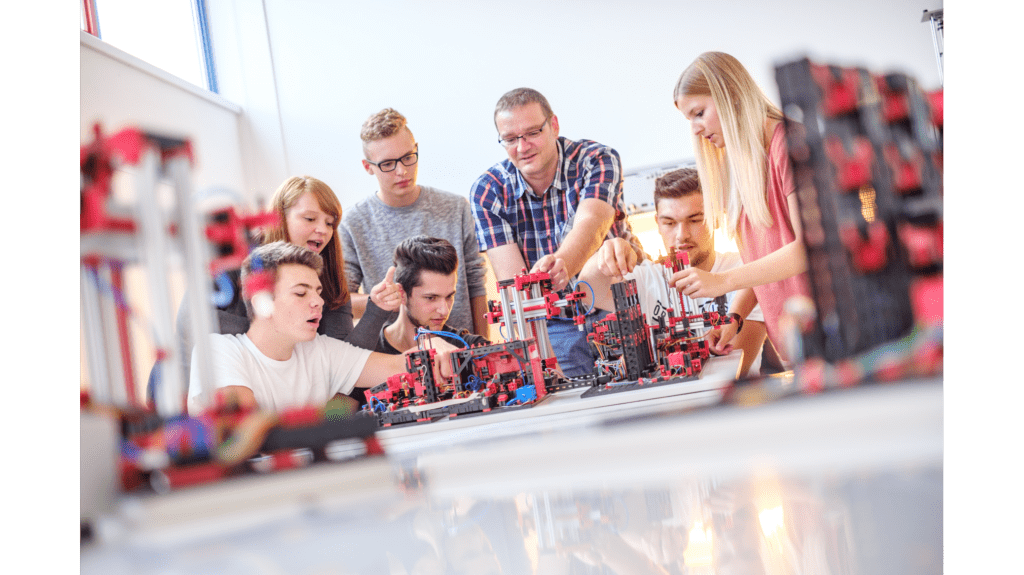
Marcus Grum ist Juniorprofessor für Wirtschaftsinformatik, insbesondere für KI-basierte Anwendungssysteme. Er beugt sich über ein ungefähr ein mal ein Meter großes Modell aus fischertechnik Bausteinen. Fasziniert schaut er zu, wie ein roter Holzstein von einem kleinen Hochregallager aus über ein Transportband zu verschiedenen Fertigungsstätten transportiert wird. Das Simulationsmodell von fischertechnik wird an Universitäten und in der Ausbildung eingesetzt, um den Bestellprozess, den Produktionsprozess und den Lieferprozess in digitalisierten und vernetzten Prozessschritten abzubilden.
An der Universität Potsdam wurde die fischertechnik Lernfabrik 4.0 in Kombination mit anderen Simulationstools und einem neuronalen Zwilling dazu verwendet, globale Fertigungssteuerungsprozesse nachzustellen. In einer Forschungsreihe wurde beispielsweise eine Marmeladenproduktion simuliert. Es wurde angenommen, dass Produkte weltweit an vier verschiedenen Fertigungsstätten gefertigt werden, die jedoch über unterschiedliche IT-Systeme verfügen.
Beleuchtet wurden sämtliche Prozesse, vom Beschaffen der Früchte bis hin zum Vertrieb an den Kunden. Die fischertechnik Lernfabrik 4.0 stellte eine von vier der vernetzten haptischen Fertigungsstationen dar. In der Anlage wurde der Prozess vom Einlagern der Früchte über das Einführen in die Kochmaschine zur Marmeladeherstellung bis hin zur Befüllung der Gläser und
das Ausliefern der Produkte simuliert. Das haptische Modell wurde an ein neuronales Netzwerk (ANN – Artificial Neural Network) angeschlossen. „Damit führten wir Versuchsreihen und Experimente durch, die valide Ergebnisse liefern und Produktionsineffizienzen aufzeigen. Wir können aus diesen Ergebnissen ableiten, wie derartige Ineffizienzen vermieden werden können“, erklärt Prof. Grum. Der Jungwissenschaftler wurde im vergangenen Jahr von der Stiftung Werner-von-Siemens-Ring für die Entwicklung eines methodischen Ansatzes geehrt, der es ermöglicht, Maschinen- und Geschäftsprozesse mit Hilfe von künstlichen neuronalen Netzen (KNN) zu modellieren.
Die zukünftige Forschung wird sich mit der empirischen Überprüfung der Anweisungen von neuronalen Netzen und entsprechenden Managementinterventionen befassen, die in realen Echtzeitproduktionen entstehen. „Auch hier wird die Fabriksimulationsanlage von fischertechnik zum Einsatz kommen“, sagt Prof. Grum.
Weiterführende Informationen zu den fischertechnik Fabriksimulationsanlagen: Simulationsmodelle für Industrie und Hochschulen – fischertechnik
Fraunhofer-Institute, Lamarr Institut, igus und Uni Bonn entwickeln Sprachmodell für kostengünstige Automatisierungslösungen in der Kommissionierung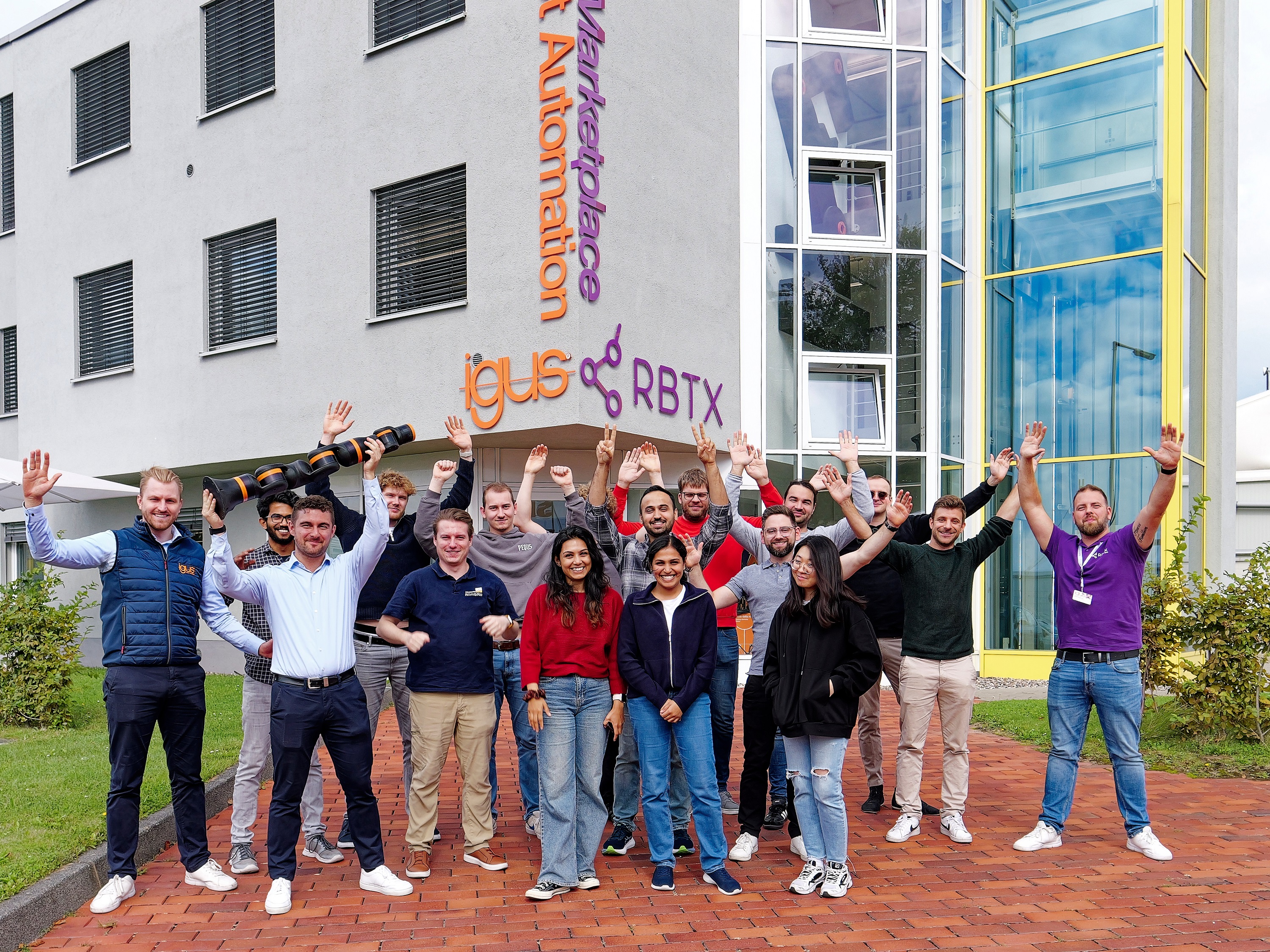 Köln, 1. Oktober 2024 – Mitte September fand bei igus in Köln ein Hackathon statt. Unter dem Motto „Künstliche Intelligenz trifft Robotics“ arbeiteten 17 Teilnehmer in drei interdisziplinären Teams daran, fortschrittliche Automatisierungslösungen für die Logistik zu entwickeln. Ziel des Hackathons war es, mithilfe eines großen KI-basierten Sprachmodells (Large Language Models, kurz: LLM) eine automatisierte Methode zum Verpacken von Pizzen zu schaffen. Die Veranstaltung fand in Zusammenarbeit mit dem Fraunhofer-Institut für Intelligente Analyse- und Informationssysteme IAIS, der Universität Bonn, dem Lamarr Institut und dem Fraunhofer-Institut für Materialfluss und Logistik IML statt. 20-mal Tonno, 10-mal Salami und 25-mal Margherita: So lautet die Bestellung des Supermarkts um die Ecke bei einem großen Hersteller von TK-Pizzen. Das klingt nach einer einfachen Aufgabe, ist jedoch immer noch Handarbeit, die aktuell manuell erledigt wird. Eine einfache und wenig anspruchsvolle Arbeit, für die sich oftmals kein Personal findet. Eine Lösung hierfür entwickelten 17 Teilnehmer der Fraunhofer Institute IAIS und IML, des Lamarr-Instituts für Maschinelles Lernen und Künstliche Intelligenz sowie Mitarbeitende der Universität Bonn innerhalb eines 5-tägigen Hackathons bei igus in Köln. Und zwar mithilfe von kosteneffizienter „Low Cost Robotic“ made in Cologne. Die Aufgabe des Hackathons lautete: Entwickelt eine Automatisierungslösung, die mithilfe von Künstlicher Intelligenz (KI) die Pizzen automatisch verpackt. Die Herausforderung bestand darin, einen Roboter so zu steuern, dass er über Sprachanweisungen direkt von Mitarbeitenden die richtigen Produkte erkennt, greift und in Mischpakete verpackt. Durch die Kombination von Generativen KI (GenAI) und Robotik sollte eine Lösung entwickelt werden, die diese repetitive Arbeit effizienter und kostengünstiger gestaltet. Automatisierung der Industrie mit KI und kostengünstiger Robotik Während des Hackathons arbeiteten drei Teams an einem realen Use Case, bei dem ein ReBeL Roboterarm vor einem Förderband mit verschiedenen Pizzaprodukten platziert wurde. Mithilfe einer Webcam und einem KI-basierten Segmentierungssystem (Segment Anything Model, SAM) erkannten die Systeme die verschiedenen Produkte auf dem Förderband und identifizierten ihre Position. Das Sprachmodell ordnete diese Objekte den gewünschten Produkten zu, basierend auf den natürlichsprachlichen Anweisungen. Anschließend legte der Roboter die Produkte in die Boxen, indem er die Anweisungen des Sprachmodells befolgte. Alexander Zorn vom Fraunhofer IAIS zeigte sich begeistert von den Ergebnissen des Hackathons: „Wir freuen uns sehr, mit dem igus Robotik-Know-how reale Proof-of-Concepts für Kunden in der Industrie zu entwickeln. Die Kombination von Künstlicher Intelligenz und Robotik bietet enorme Potenziale, um Arbeitsprozesse zu automatisieren und effizienter zu gestalten.“ Auch Alexander Mühlens, Prokurist und Leiter der Abteilung Low Cost Automation bei der igus GmbH, betonte die Bedeutung des Hackathons: „Die Zusammenarbeit mit den Instituten gibt uns die Möglichkeit, unseren Kunden zu zeigen, was alles mithilfe von KI und Low-Cost-Robotic möglich ist. Unser Traum ist es, Roboter über einen Sprachbefehl einfach steuern zu können, und das in jeder Anwendung.“ Der Hackathon zeigte, dass durch den Einsatz von LLMs und Robotik viele weitere Automatisierungsmöglichkeiten denkbar sind, wie beispielsweise das gleichzeitige Packen mehrerer Boxen, das Sortieren von Produkten nach speziellen Anweisungen oder das Überprüfen von Inhaltsstoffen auf Allergene mithilfe von Kamerasystemen. Die erfolgreiche Zusammenarbeit zwischen igus, dem Fraunhofer IAIS, dem Lamarr-Institut der Universität Bonn und dem Fraunhofer IML unterstreicht das Potenzial dieser Technologien für die industrielle Automatisierung. **Über die Partner** Das Fraunhofer IAIS ist eines der führenden Forschungsinstitute auf den Gebieten Künstliche Intelligenz (KI), Maschinelles Lernen und Big Data, während die Universität Bonn als Zentrum für Künstliche Intelligenz und Robotik bekannt ist. Das Fraunhofer IML in Dortmund brachte seine Fachexpertise in der Logistikautomatisierung und im Materialfluss ein. Während das Lamarr-Institut führend in der internationalen KI-Forschung und dem Maschinellen Lernen ist. |